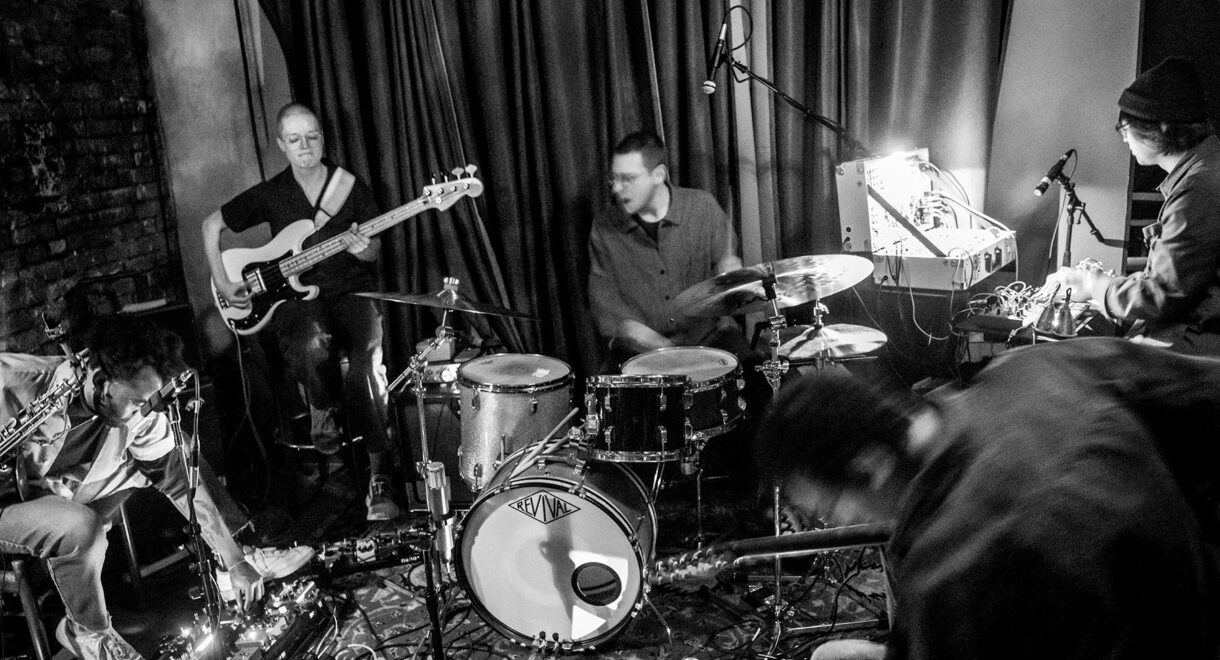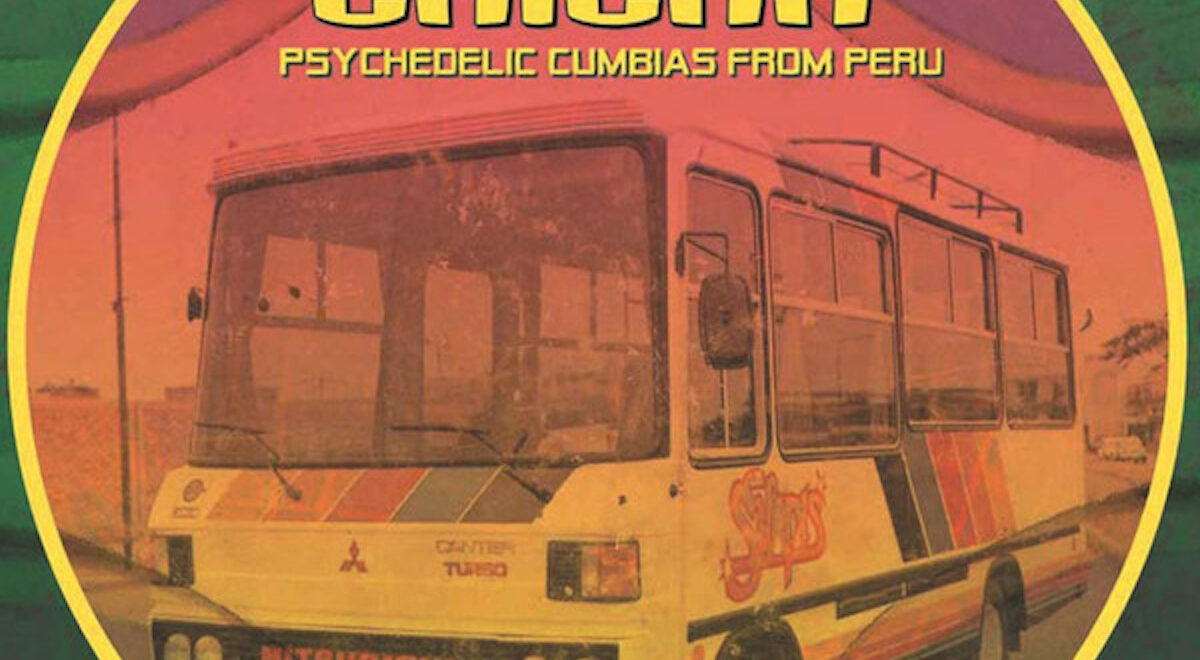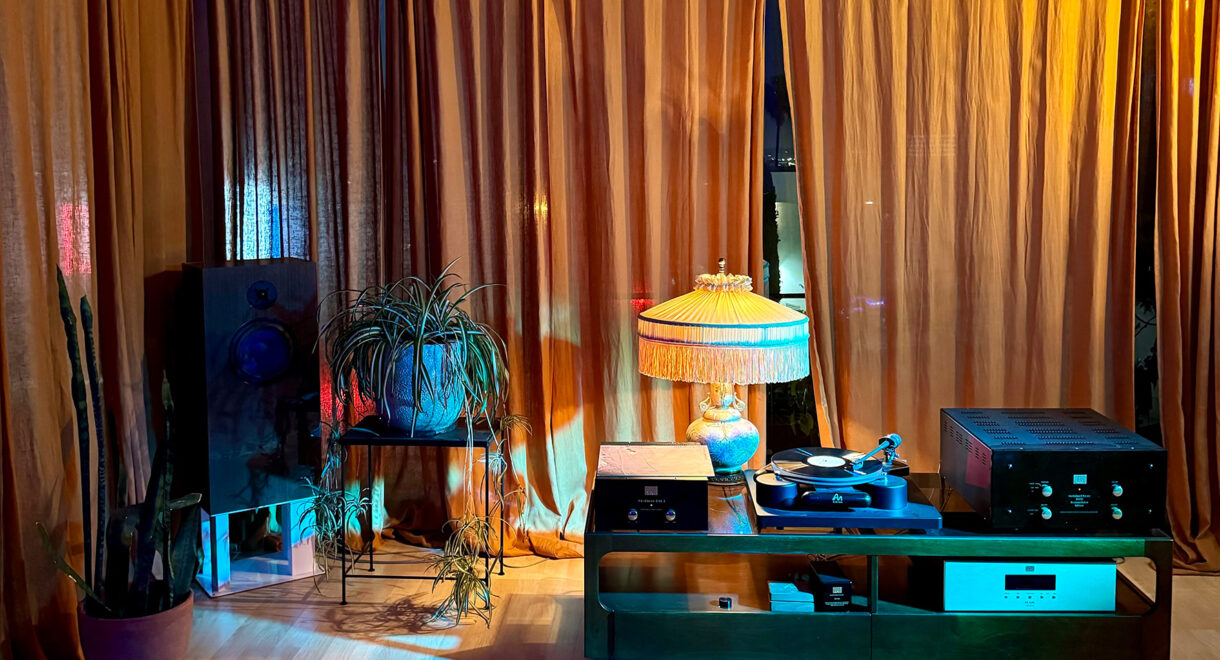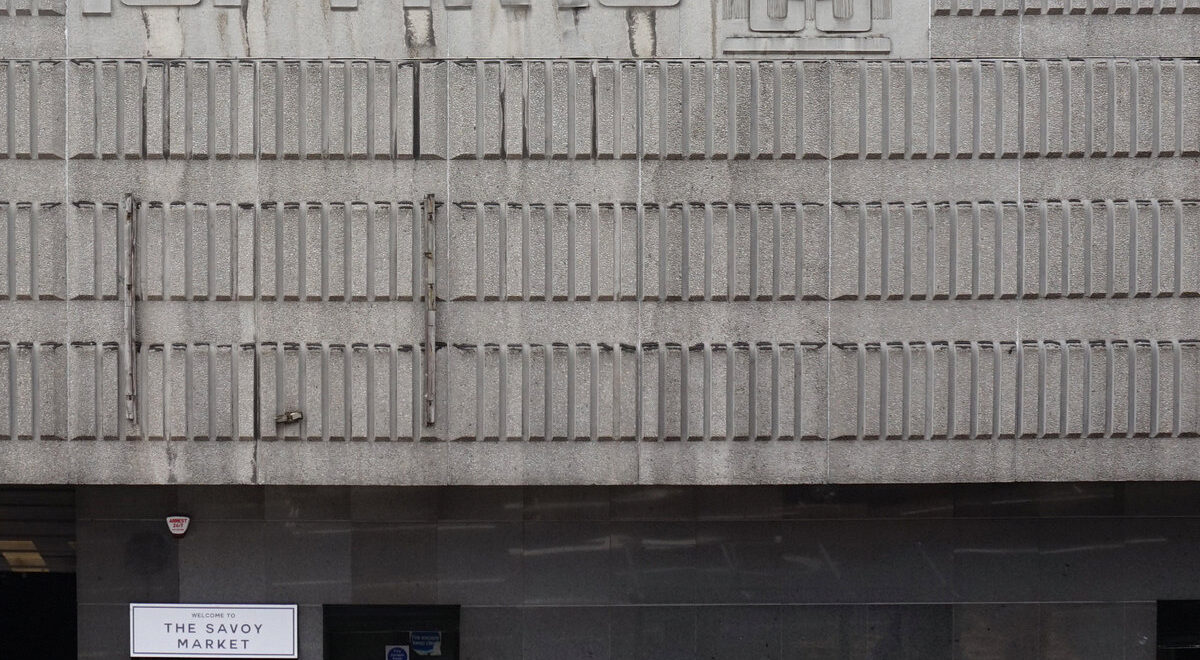The forecast is ominous: Sometime on Wednesday, the massive Hurricane Beryl, currently a category 4 storm, will likely hit Kingston, Jamaica with sustained winds of more than 145 […]
Dubwise Cumbia & Sonidero Culture with CDMX-based artist Daniel Rincón (NAP)

CDMX-based Colombian artist Daniel Rincón aka NAP takes us through the history of sound system culture in Mexico.
In recent years, contemporary Latin club music has made its way across the world on major airwaves and through the dance underground with artists like DJ Python, Nick León, Kelman Duran, and Bitter Babe (there are probably countless other artists we’re missing here) leading the movement through their pioneering productions that blend reggaeton, guaracha, dembow, cumbia, and other Latin genres with elements of ambient, techno, downtempo, chillout, and IDM. In 2022, León’s “Xtasis” featuring Venezuelan raptor house godfather DJ Babatr was named Resident Advisor’s “Track of the Year,” and the Latin club music movement has continued to grow ever since.
One of the rising stars of this movement is CDMX-based artist Daniel Rincón aka NAP. Born in Colombia, Rincón emigrated to Canada at an early age, spending crucial years developing his sound in Vancouver and Montreal amongst artists from the 1080p and Mood Hut crews before moving to Mexico City, where he resides today. A deeply expressive all-genre selector who has been known to play everything from country (this mix was one of our favorites of the pandemic) to techno, ambient to indie, dub to cumbia and beyond (also check out his amazing entry to the Knekelhuis mix series), Rincón brings a wealth of influences into his own solo productions and various collaborations that are largely independently released on his own Isla imprint.
Rincón’s latest draws from his experiences with neighborhood sound system (Sonidero) parties in Mexico City as well as the Cumbia Sabanera style from his native Colombia. From the label: “These digi forward compositions are Rincón’s mutant love letters to the music he grew up with, as well as celebrations of his quotidian experiences of ‘Musica Tropical’ in one of Latin America’s largest metropoles, where the lived experience of not only Cumbia, but Afro-Caribbean and Indigenous rhythms, flourish in the markets, the plazas, the streets and the oral history shared through all generations and walks of life.” Never shy with his myriad influences, Rincón also employs an Adrian Sherwood-esque post-punk-infused dub mixing style that gives the tracks a modern touch and deep psychedelia that’s impossible not to get lost in. Listen below:
In Sheep’s Clothing’s Phil Cho spoke with Rincon about Mexico City, Sonidero Culture, musical traditions & rhythms of Latin America, classic Latin sound system records, and more!
You moved to Mexico City in 2022 to connect with your latin roots. What can you say about the scene there and how it’s influenced you as an artist?
That’s right! I feel like being in a new place where I speak the language but that is also completely new to me has inspired me not just as an artist but in general. The openness of people, being able to speak Spanish again, learning about the culture and history of the country, and also being in an equatorial climate (coming from MTL) have filled me so much with joy and excitement for being here. Musically speaking, it’s incredible how many scenes there are here; not only for underground electronic but also for regional, experimental, punk and jazz. I feel like I am in a unique metropolitan city where I am able to connect with a variety of interests in a genuine and open way. I’ve also been very lucky to have met incredible people that have been very welcoming and kind in sharing with me deeply moving experiences.
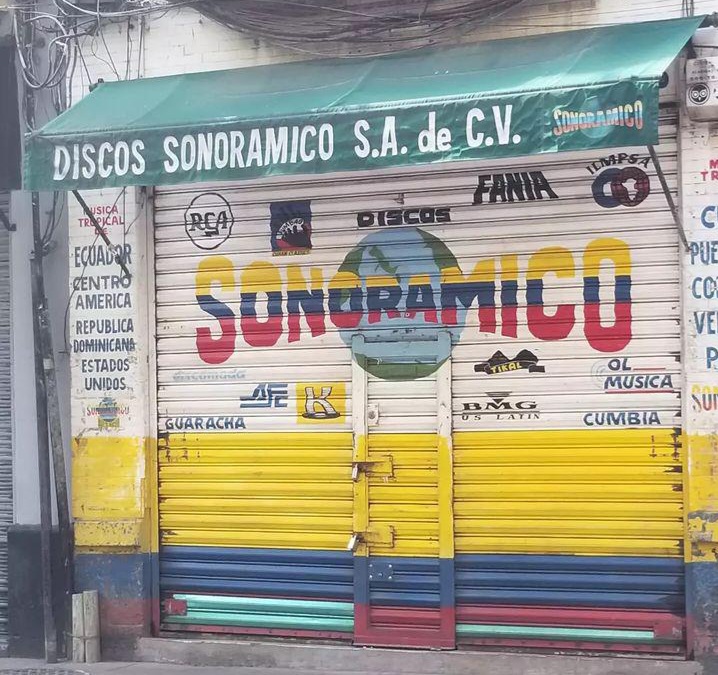
How did you first encounter sonidero culture? For those unfamiliar, what is sonidero culture? Any stories or experiences you can share?
Around 4 years ago I read a book called ‘La Cumbia Como Matriz Sonora de America Latina’ by Dario Blanco which was a big tip and introduction to the history of Sonidero culture in Mexico. The book focuses on the migratory nature of cumbia as a genre through Latin America the past 100 years and explores how cumbia made its way to Mexico in the 50’s and 60’s from Colombia, Peru and Ecuador, paving the way for what the Sonidero movement would become. This movement grew out of DIY neighbourhood sound system parties where cumbia, but also salsa, merengue and its derivatives would be played and MC’d over. These parties started happening across the country, but one of the biggest epicentres for it was Ciudad de México, where the term was coined. The periphery neighborhood of El Peñon de los Baños in Iztapalapa, as well as Tepito (in the centre of the city) are two of the places where the movement really took off. These neighbourhoods are where the first big sound systems grew out of; names like La Changa, Fascinación, Arco Iris, La Conga and Latin Fania amongst some of the main ones. These sound systems had their own signature tracks and ways of mixing as well a special shout out style from the MC that was focused around calling out the tunes as well as shout out requests for people and crews present at the party.
Although clandestine sound system parties around the 60s and 70s incorporated in different styles across Latin America (Picos in Colombia/ Minitecas en Venezuela), the Mexican variant is probably the one that grew to be the biggest and, to this day (despite its ups and downs), is still going strong with a lot of the first sound systems still playing. Aside from CDMX, the Sonidero culture was also co-opted by other cities like San Luis Potosi where you got the Wepas (a deranged style made famous by El Rey Del Wepa from Kiss Sound and El Royal from Royal MDB). In Monterrey you got the Rebajadas (originated by Gabriel Dueñez of Sonido Dueñez). The rebajada is a slowed down form of Cumbia in the style of Memphis Chopped and Screwed records, and is the variant of Cumbia in Mexico that resonates with me the most . A lot of these records can be played in the style by playing 45’s at 33 rpm +5.
My real experience of the culture came when I moved to Mexico and was able to go to the sonidos, tardeadas and dance halls. Some highlights have been: seeing Sonido La Changa at the Zocalo in front of thousands of people all ages dancing and singing all the tunes in the pouring rain; going to a house party at Joyce MX Power Cumbiero’s house where she and Los Cotopla Boyz (Cumbia Powerangers) played in the rooftop of her house; anytime buying records from el Discos Balderas or el Güero De Tepito; seeing Sonido El Pato play a 5 hour set in Eje Central with his signature golden turntables; going to the OG dance halls (Salon Los Angeles, Balalaika, Mr Lees, Barba Azul).
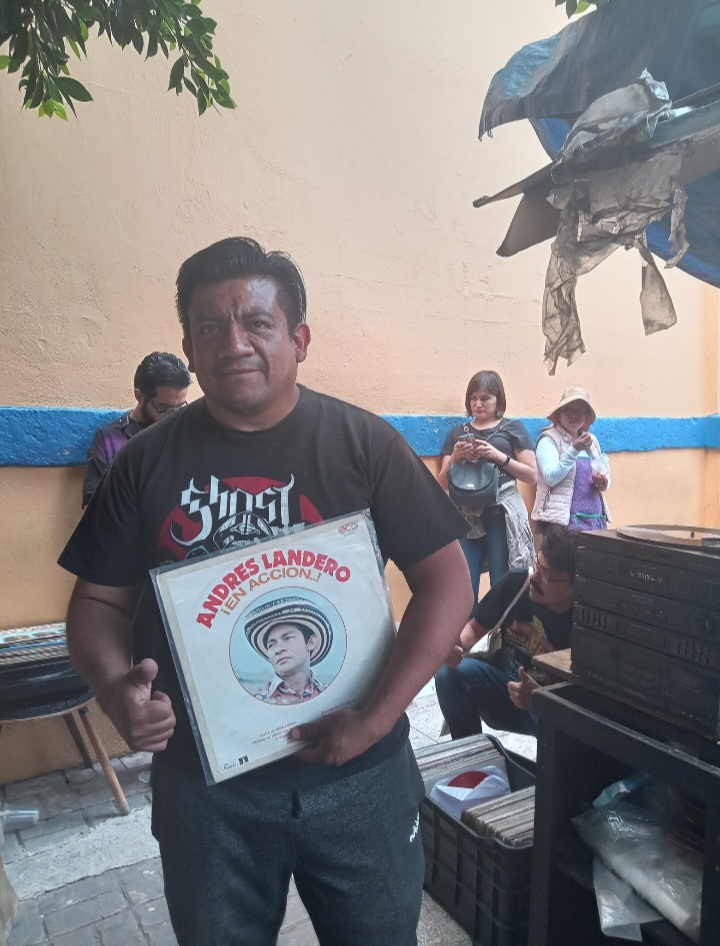
“Almost every Latin American country had its own iteration of this style of [neighborhood] parties which, although not directly influenced by Jamaican dub culture, share a lot of similarities in the delivery and ceremony of the music.”
We’ve chatted about the multitude of musical rhythms and folk dance traditions in Latin America. Can you share some of the styles that inspired you on this record and some of the signature signifiers (rhythms / instruments) of those sounds,
This record is inspired by Cumbia rhythms and melodies, especially the Cumbia Sabanera style from Colombia which is comprised of the usual percussive elements (tambor alegre, llamador, guacharaca, maracas) with diatonic accordion and gaita as the main melodic elements. This type of Cumbia was made famous by people like Aníbal Velásquez, Andres Landero and Lisandro Meza, who were a big inspiration on the Sonidero movement in Mexico and also inspired a dialogue between both countries which kept the genre alive and well, eventually taking the baton from the originators and ushering new sounds with it.
Being here and seeing how Colombian Cumbia has influenced new splinters of the genre like Rebajadas, and even newer music like Cumbiaton makes me feel like I am witness to the progression of the music. This has been very humbling and the biggest musical inspiration lately.
Another facet of this project’s inspiration was taking these rhythms and mashing them with digi dub mixing techniques. In lieu of not having gear and wanting to work with what I had (the computer) I got really into dubbing in the box, which also gave way to a lot of interesting experimentation with sampling and granular synthesis.
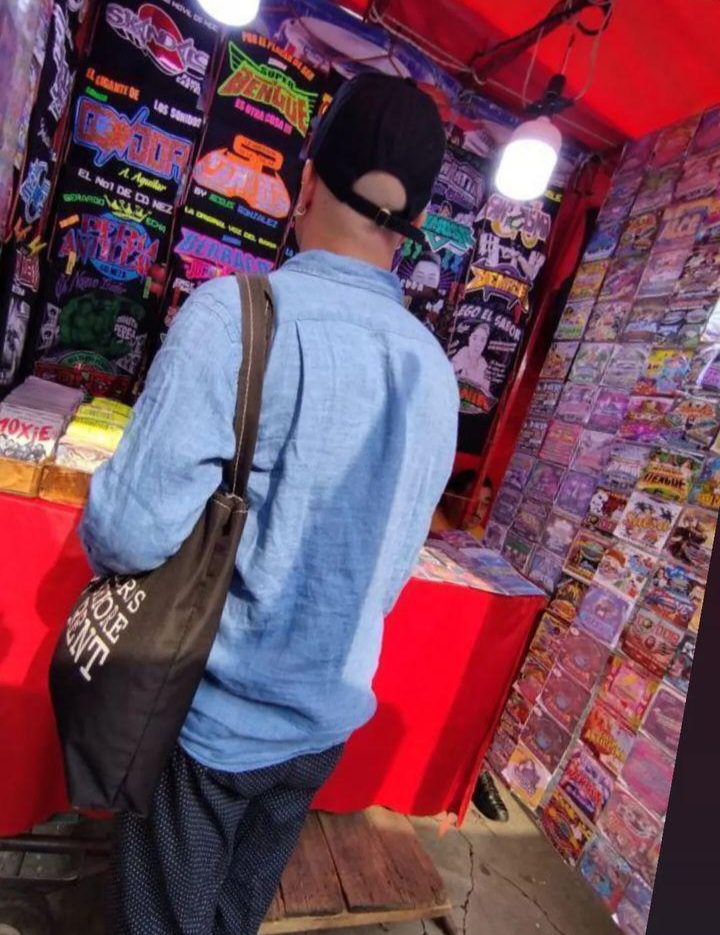
The liner notes mention your interest in the “sonic migration of cumbia across the Latin American continent and its diaspora.” You’ve also spoken to me about how this is related to dub and sound system culture. Would love to hear more about that.
For sure! As I’d mentioned earlier, one of the cornerstones of how Cumbia was disseminated from the 50s-70s across the continent was through neighbourhood parties where these records (not only Cumbia but Salsa, Merengue, Vallenato etc) would be played. Almost every Latin American country had its own iteration of this style of parties which, although not directly influenced by Jamaican dub culture, share a lot of similarities in the delivery and ceremony of the music. Just like in Jamaican sound system culture, you have the traveling sound system, the crew that puts it together and the DJ who is its leader, disc jockey and MC. Another overarching similarity is the grassroots style in which the music was distributed which is also a great part of the ecosystem of neighbourhood culture in the 20th century (cumbia, reggae, rap) in which bootlegs, mixtapes and dub plates were key in helping to spread the music outside of big label distribution.
Can you share a few essential latin sound system records / artists that our audience should listen to?
With pleasure!
The first record from Los Angeles Azules on Poncho Zamudios’s Discos Dancing label. Colombian Cumbias done by a group from Iztapalapa who would become one of the biggest acts of Mexican Cumbia.
Another first album from the Corraleros de Majagual. Seminal Colombian group put together by Antonio Fuentes of Discos Fuentes that had a revolving door of heavy hitters come through its roster, including Lisandro Meza. This album really pushed the evolution of Afro Colombian music by putting the accordion in the center of the songs against the percussion orchestra. Ten years later after its release it would also become a classic for the Mexican Sonidero movement. Propulsive and fast cumbia vallenata from Sincelejo, Sucre.
A classic from the young queen of Cumbia Aurita Castillo who was six when she recorded her first record for Discos Fuentes. One of my favorite tunes and a sonidero classic.
Toasted psych cumbia version of a Johnny Cash tune from Los Babys.
Modern digi cumbia from Puebla’s Sonido Chiripa. The crude vocal sample of the baby makes this tune an absolute trip…
Mixtape from the great Ramón Rojo Villa of Sonido La Changa. Incredible selections backed by his classic MCng style. The Sonidero style of CDMX on full display here.
First side from the legendary ‘REBAJADAS 1’mixtape from Gabriel Dueñez of Sonido Dueñez in Monterrey. One of the originators of the reduced cumbia style.
Amazing compilation of ‘Rebajadas’ put together by DJ and historian Joyce Musicolor of MX Powercumbiero. The CDMX part of the Rebajada history!
Futurist Cumbia from a newer Mexican group ‘Amantes Del Futuro’.
Buck collab between Colombia’s Gaiteros de San Jacinto and Adrian Sherwood.
Last album from the Colombian supergroup Romperayo. Live psych cumbia that references the past with style and adds something all its own.
This will be released on ACA, a new label from you and Phran. What is the concept behind the label and some releases / artists to look forward to?
The label is dedicated to releasing electronic music from South America, both new and old. For the first three releases we’ve focused on anthologies from some of the Tuki and Raptor House originators from the Venezuelan Miniteca scene of the early 00’s: DJ Babatr and DJ Yirvin. While we want the label to focus on giving light to music from the continent we feel needs more attention, we also want to release new music from friends, up and coming producers and our own projects. Our aim is to create bridges between countries, genres and generations.
Our future releases will be all over the place but you can expect killer stuff from Phran, some merengue edits from friends and ourselves, more archival material from the Venezuelan underground and Classic Mexican Electroclash (amongst others!).





